Learning to grow hot peppers outdoors
Bitter pepper is not as popular with summer residents as its sweet cousin. Only a few can withstand the test of its burning taste, but the pulp of the vegetable has a rich chemical composition, most of the components of which: B vitamins, carotene, nicotinic acid are essential for the body. They speed up metabolism, being equally needed by muscle and nerve cells, increase the speed of thought processes, energize, and increase vitality.
The base of the taste of bitter pepper is made up of essential oils, under the influence of which the appetite awakens and digestion improves. It is rarely consumed fresh, but it is indispensable in marinades and sauces, as well as in a dried state: the demand for paprika in stores does not fade away. Growing this culture will not be difficult even for inexperienced gardeners, because there are no special differences between the cultivation of hot and sweet peppers.
Suitable plot
In order for chili bushes to bring a generous harvest, the beds for them must be made in the right place. Hot peppers love warmth, sudden temperature changes are destructive for him. It develops best in bright and at the same time reliably protected from drafts. In extreme heat, plant leaves can be damaged by being covered with sunburns. Therefore, on hot days, and especially at midday, open field plantings should be shaded.
Hot peppers need a moist, nutrient-rich, non-acidic soil. Chili roots quickly rot in damp soil. So that its cultivation does not end in failure, water stagnation in the beds should not be allowed. After watering, drops should not remain on the leaves and stems of the bushes. Moisturizing by sprinkling is contraindicated for bitter pepper. If the groundwater lies close to the soil surface, high ridges are poured to plant the plants.
Greenhouses are more suitable for growing chili than open field conditions. It is important for its development that the temperature and humidity level of the air remain unchanged. In the beds, it is impossible to provide such constancy to his bushes. As a result of temperature fluctuations, albeit minor ones, the growth of hot pepper slows down. But in the open field it will bear fruit. If you plant a plant in the correct area and properly care for it, its powerful bushes can reach a height of 1 m, and their stems will be densely covered with vegetables.
Sowing seedlings
Hot peppers are among the most heat-loving crops, so they are usually grown by seedlings. Sowing dates depend on the characteristics of the local climate. In the southern regions, where the soil temperature rises to 15 ° C in early May, seeds are planted in boxes in the middle of winter (January to February). If plants are placed in open ground in late spring, pepper is sown in the second half of February or in March. Chili is planted on the beds at the age of 40-50 days. By this time, 6 leaves will have formed on the plants, and the seedlings will reach 15 cm in height.
It is convenient to grow seedlings in wooden boxes. You can use plastic boxes, but holes are made in them for drainage.
Soil for sowing hot pepper seeds is prepared by mixing two components in a 3: 1 ratio:
- humus;
- sand.
A little wood ash is added to the resulting nutrient substrate.
Advice
To disinfect humus, it is first steamed over a fire and only then mixed with other components.
Hot pepper shoots will appear faster if you plant seeds that have already sprouted.In order for them to hatch, they are wrapped in wet gauze, which is pre-folded in 5-6 layers. During this period, warmth is especially important for chili. If the temperature does not drop below 25 ° C, the seeds will germinate in a week. When this happens, the bottom of the planting boxes is covered with a drainage layer. It can be done by combining three components in equal proportions:
- broken brick;
- small expanded clay;
- Styrofoam.
Then the box is filled with a fertile substrate, which is desirable to warm up to 40-45 ° C. The thickness of the soil mixture layer should be 8-10 cm. Chili seeds are planted in shallow (1-1.5 cm) grooves. They are made with an interval of 5 cm. Having spread the seeds 2 cm apart, they are sprinkled with a substrate. Rows of planted hot peppers are spilled with a growth stimulant solution or liquid fertilizer. Finish sowing by slightly compacting the soil. You can do it with your hands or use a board.
Seedling care
Hot peppers emerge in conditions of heat and high humidity. After sowing, the boxes are covered with glass or tightened with foil. During the daytime, they should be in the warmest place possible. At night, germinating seeds need a cooler temperature (about 15 ° C), so the containers with them will have to be rearranged twice a day. This will make the seedlings stronger and more viable.
When the young chilies emerge from the ground, the shelter is removed. Boxes with seedlings are rearranged in a warm and bright place, where they are kept until they are planted in the ground. After the seedlings release 2 true leaves, they dive... Water the soil in the container 2-3 hours before the procedure. Then the seedlings of hot pepper are carefully removed from the ground, prying with a knife, slightly shortening their root and placed in separate containers, preferably peat pots. Their planting ends with abundant watering, for which they use warm water that has been settled for at least a couple of hours.
In the early stages of development, hot peppers need a long (at least 12 hours) daylight hours. If it gets dark early, then until the seedlings dive, it is artificially lengthened with the help of a lamp. Water the young chili regularly to keep the soil from drying out. To prevent the stems from falling on the surface of the soil, a little potassium permanganate is mixed into the water. Bitter pepper will also benefit from top dressing. They are held twice a month. Chile responds well to top dressing:
- liquid fertilizer for seedlings;
- infused wood ash.
Prepare the nutritional composition as follows: 2 tbsp. l. the substances are stirred in 3 liters of water and left for a day. The present solution is thoroughly filtered. You can use cheesecloth for this by folding it in 4-5 layers. Then water the seedlings with it.
Placement on the beds
Planting chili in the beds is carried out when the air and soil are well warmed up (the average daily temperature will be 13-15 ° C), and the probability of frost becomes minimal. For the procedure, you should choose cloudy weather or transfer it to the evening hours. Seedlings are placed in open ground along with a soil clod. To remove the seedlings from the container it was easier, first they are watered abundantly.
Wells for hot peppers are made at a distance of 40-45 cm from each other. The row spacing should be 50-60 cm. Planting can be done in the nesting way:
- according to the 60x60 scheme, when 2 seedlings are placed in one hole at once;
- according to the 70x70 scheme, when 3 bushes will grow in each hole.
Advice
Growing chili next to bell peppers is highly undesirable. If you place the beds with these crops close, they will be pollinated and the taste of the fruit will suffer from this. The distance between the areas where the bell peppers and hot peppers grow should be at least 3 m.
The stalk of chili is weak, so after planting it is better to immediately tie it to a support. Soil under the plants mulch... If night frosts are still possible, the beds should be protected from them with foil. Hot peppers may not stand a drop in temperature to 2-3 ° C. They remove the shelter when the frost season is over.
It is possible to determine whether it is time to place seedlings in the ground by experience. To do this, a few days before the procedure, 2-3 pots with seedlings are placed on a cold windowsill or an unglazed loggia. If they calmly survive the experiment, you can continue to grow them outdoors.
After disembarking
The agrotechnics of hot pepper is simple and does not require special skills from the gardener. You will need to perform simple manipulations:
- water the plantings often;
- periodically feed the bushes;
- weed out in a timely manner;
- regularly loosen the soil under the plants.
Freshly planted chiles will grow slowly. Their development will accelerate when 2 weeks have passed from the moment they are placed on the beds. In order for the seedlings to take root faster, oxygen must freely flow to their roots, therefore, frequent loosening of the soil during this period is especially important. It is also advisable to spray the plant leaves with a solution of a growth stimulant. Chili cultivation will be successful if the air is heated to 20-32 ° C. At lower temperatures, the growth of its bushes slows down. And if it gets colder to 10 ° C, it will stop altogether. In extreme heat (at temperatures above 32 ° C), plants can shed their buds and already open flowers.
Bitter pepper prefers moist soil, so you will have to water the plantings often. Use warm water for this. Its deficiency will adversely affect the harvest. The number of irrigations and the volume of the applied liquid are increased in the following cases:
- when the plants will pick up buds;
- when ovaries appear on them;
- if the weather is hot and dry.
Fertilizers for hot peppers are chosen depending on the phase of their development. It needs nitrogen, phosphorus and magnesium before flowering. When the ovaries are formed, phosphorus-potassium compounds containing a minimum of nitrogen are introduced.
Advice
In hot weather, in the absence of wind, the bushes will need to be helped to pollinate. To do this, they are slightly shaken. Incomplete pollination spoils the presentation of vegetables: their shape is bent.
If the pepper bushes grow well and have already picked up buds, they are stepson. The flowers on the top of the chili are removed to make it more compact. When the peppers reach a height of 25 cm, the central shoot is shortened by slightly cutting off its top. This stimulates the intensive development of lateral branches, of which 4-6 need to be left, carefully removing the rest, and the rapid growth of the entire bush. One chili can bear up to 25 large fruits. If more ovaries have formed, the extra ones are cut off so that they do not draw strength from the plant.
Hot pepper is a spicy vegetable that has won the love of gourmets around the world. Chili comes from the tropics of the American continent, so it is quite capricious, requiring a lot of heat for its development and sensitively reacting to a lack of moisture. But its cultivation is also possible in the gardens of the middle lane, it is only necessary to comply with the terms of placing seedlings in the beds.
Few summer residents decide to breed this culture. Meanwhile, there is nothing complicated in her agricultural technology. Watering, loosening the soil, removing weeds, feeding, pinching - these are all the basics of caring for hot pepper. Plant a spicy chili on the site, and an abundance of bright fruits with a memorable taste will be a worthy reward for your efforts.
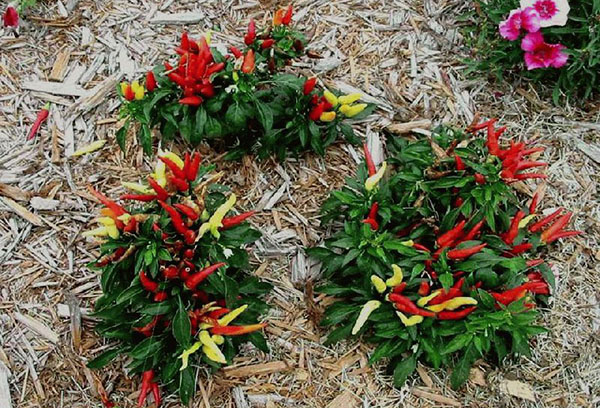

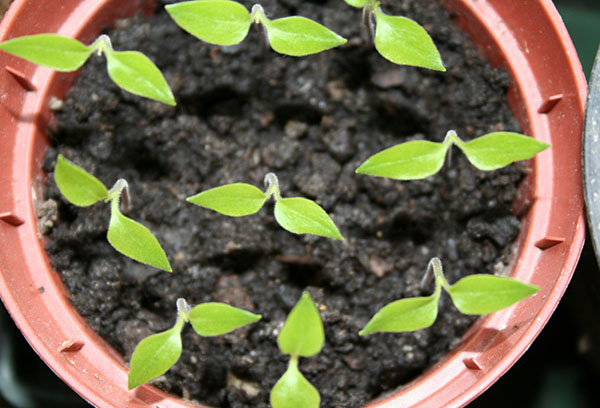
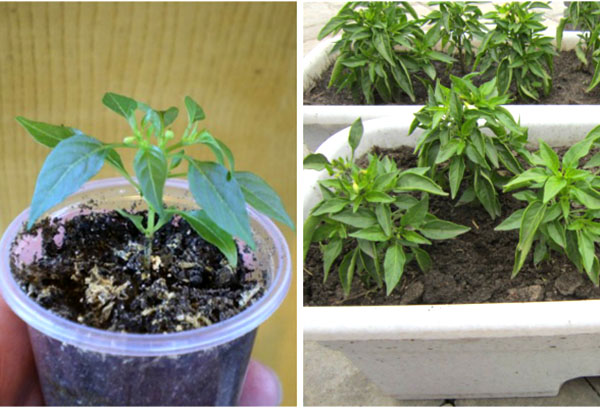

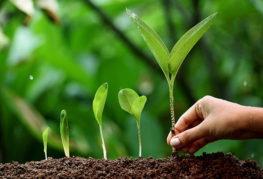
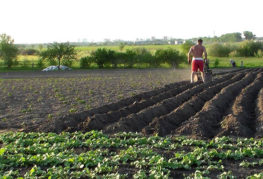
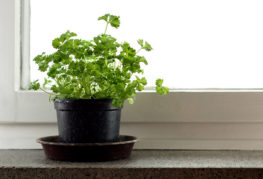
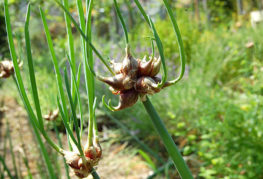
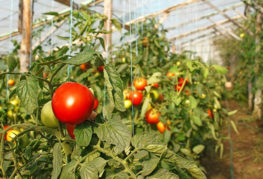
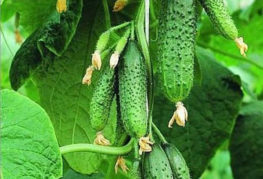
and will be published shortly.